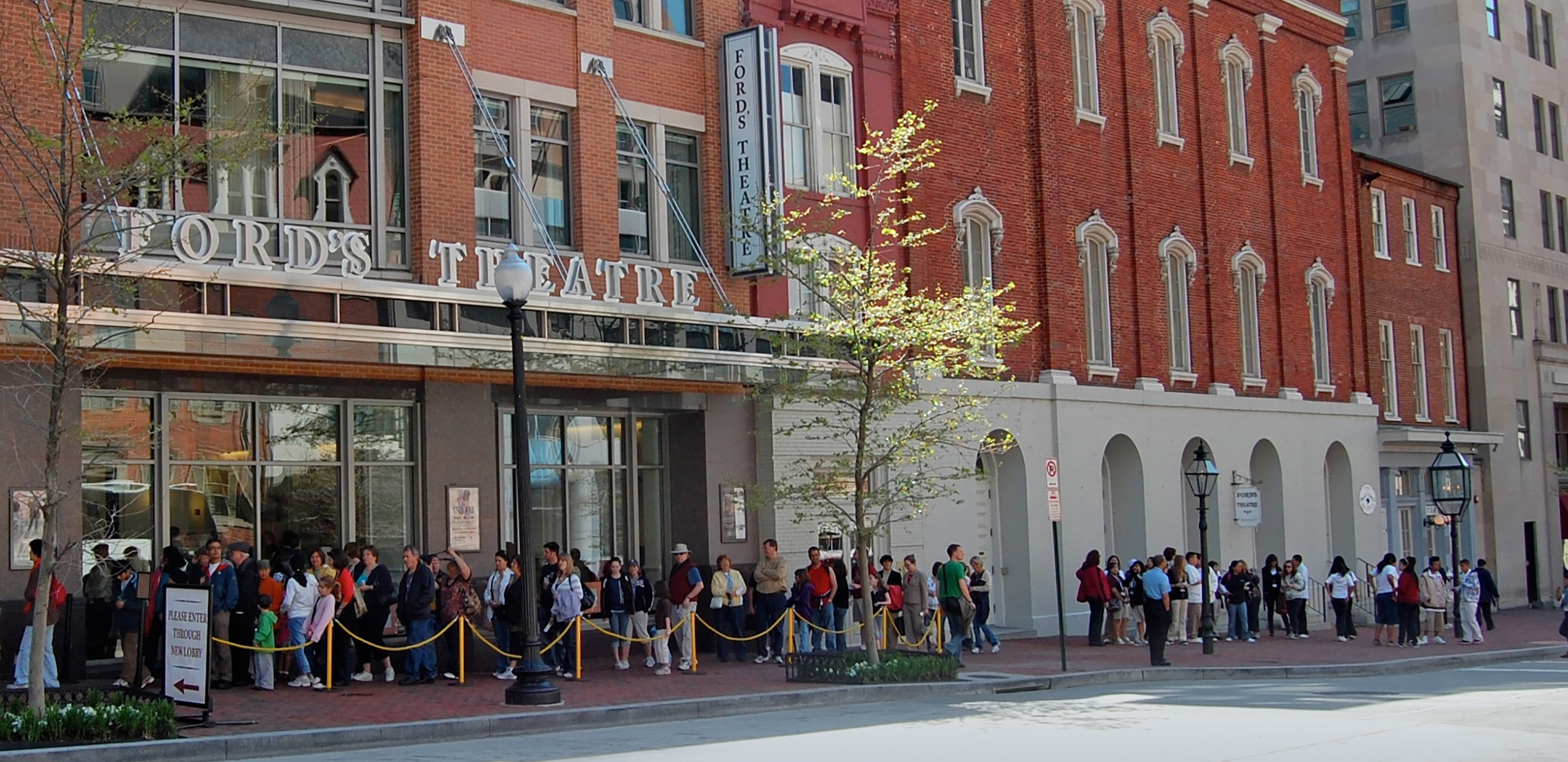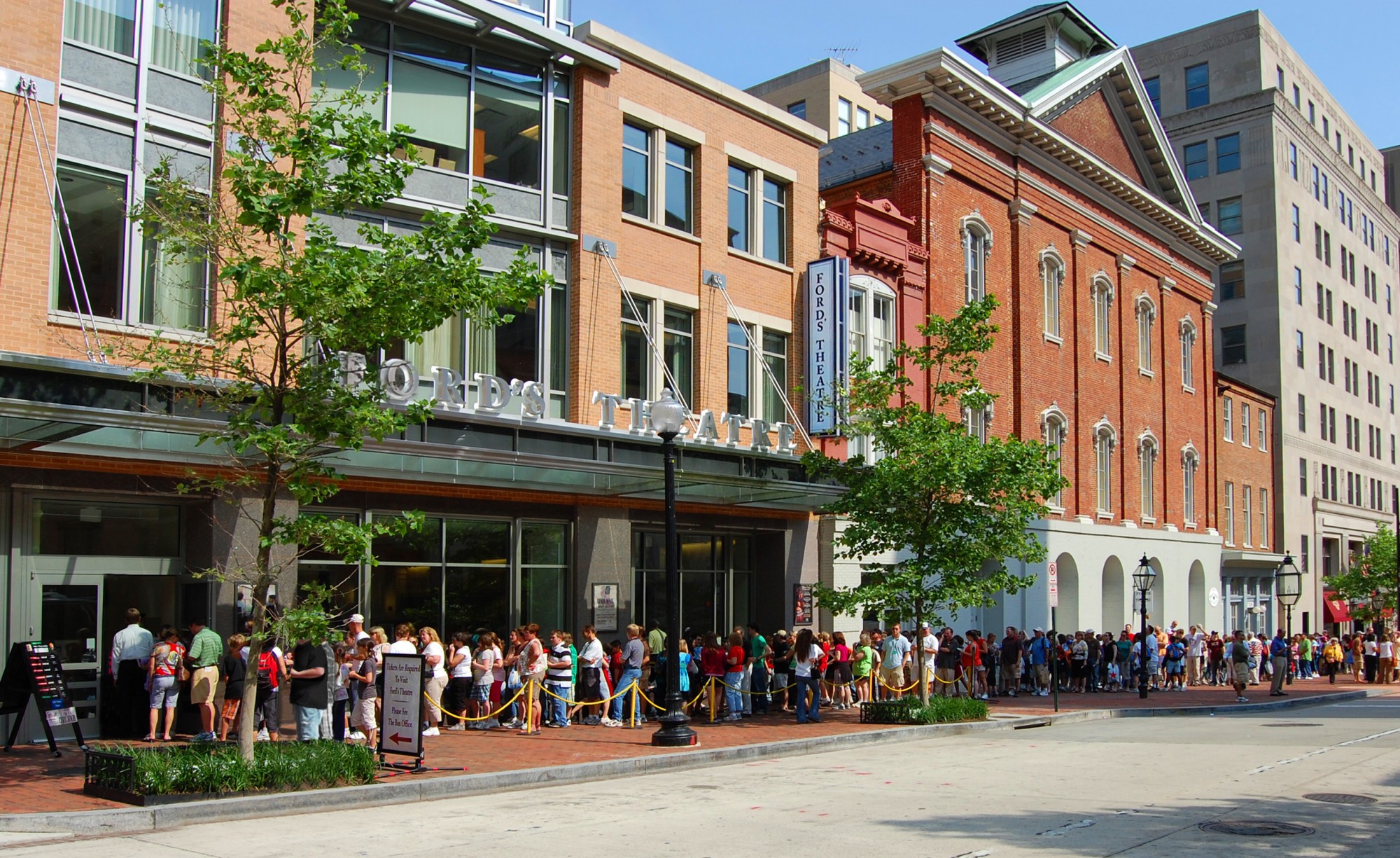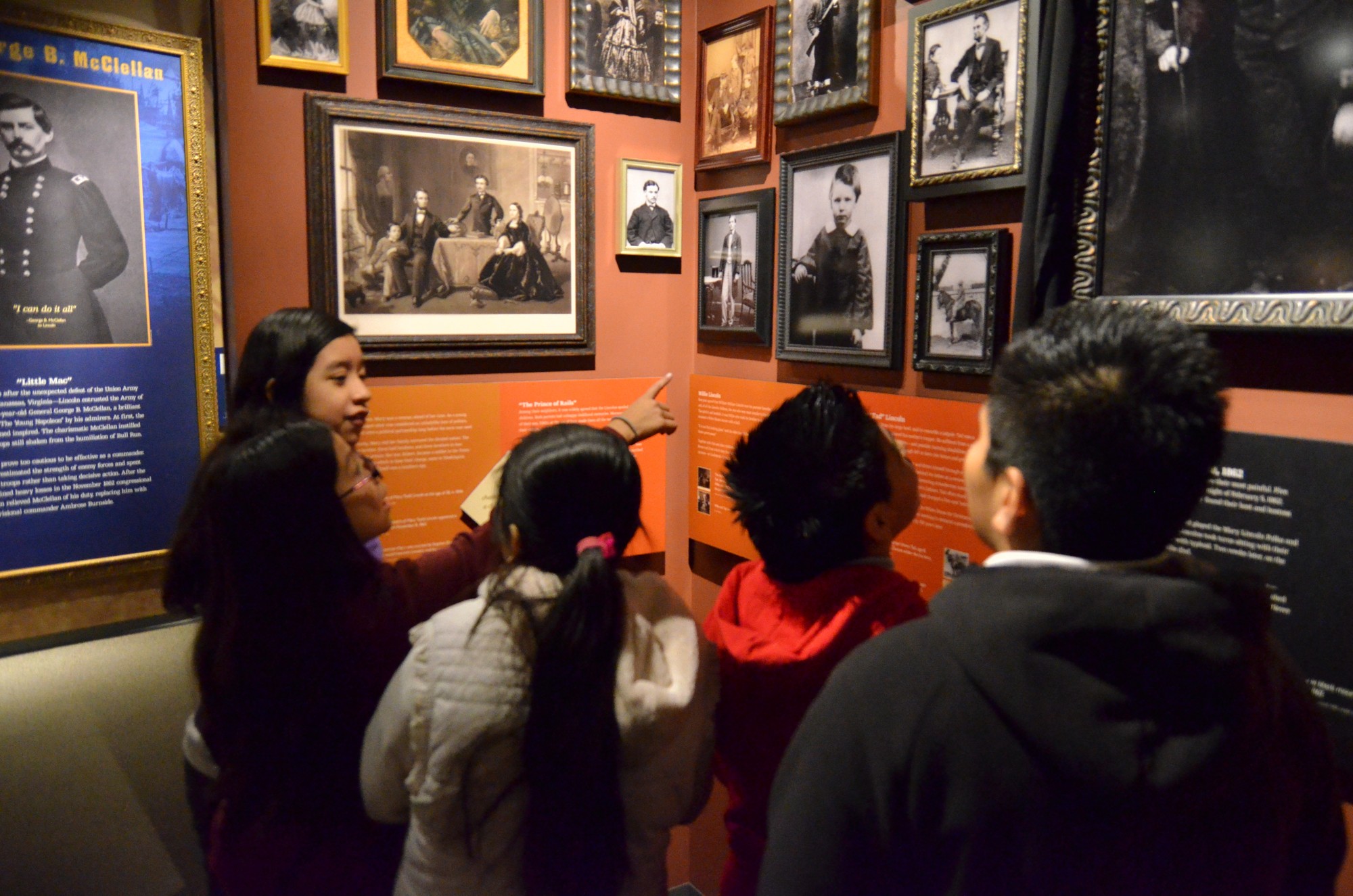
Interpretive Planning at Ford’s Theatre
In recent years, we at Ford’s Theatre Society and the National Park Service (NPS) have embarked on several new interpretive projects, like the Remembering Lincoln website, the revamped www.fords.org and a new interpretive experience for students. At the beginning of each of these projects, we found ourselves asking the same questions:
- What is this about?
- What are the themes?
- What do we want audiences to get out of this?
As we think about future projects on-site—including changes to the Ford’s Theatre Museum and a new exhibition (funded by the National Endowment for the Humanities) on the second floor of the Society’s Center for Education and Leadership, we realized the same conversations come up again and again.

Through a Gap Analysis that evaluator and strategist Kate Haley Goldman and evaluator Conny Graft completed, we learned that, like other museums and historic sites, we needed a comprehensive interpretive plan before going further.
What is an interpretive plan?
Ideally, every exhibition, program or resource, for any audience, should be based on an interpretive plan. There are many definitions out there but, generally, interpretive plans help unify messages and takeaways that a museum or historic site wants visitors to understand and walk away with following a visit. Haley Goldman created the below idealized model of how an interpretive plan should fit into an organization’s work.
The interpretive planning process can be long and meticulous—but rewarding in the end. At Ford’s, we now have a set of comprehensive themes and messages to help focus our work now and in the future.
How We Did It
To create our interpretive plan, Ford’s and our NPS colleagues worked with two outside partners: Haley Goldman Consulting and the International Coalition of Sites of Conscience (of which Ford’s Theatre Society and the National Park Service are members).
Kate Haley Goldman led us in a series of four workshops and two surveys. Staff members at all levels and consulting scholars participated in refining the themes that came out of some previous NPS interpretive planning in 2013, and match those themes with outcomes for four different audiences:
- student visitors
- out-of-town tourists
- theatregoers
- Washington-area locals
#TFW you manage to get an interpretive planning meeting involving two consultants and senior staffs of a nonprofit and a government agency on the calendar. pic.twitter.com/gGAPu8jv3T
David McKenzie (@dpmckenzie) September 26, 2018
These workshops and surveys took a lot of time but led to a lot of creative thinking on everyone’s parts, and a set of messages on which both institutions could agree.
As part of the process, Braden Paynter and Sarah Pharaon of the International Coalition of Sites of Conscience, led a two-day training for our staff members about what dialogic interpretation is and how to establish talking points for the stances we consider non-negotiable as part of our historic site’s history.
In the training, we built on previous work and defined a number of Foundational Truths, or non-negotiables: statements about the history that represent official institutional stances (Maine’s Abbe Museum describes the concept of non-negotiables here). Braden and/or Sarah were present for the workshops and shaped those non-negotiables into a Foundational Truths Document, which outlines and elaborates the values for historical interpretation at Ford’s Theatre.

What’s in the Interpretive Plan?
The Interpretive Plan includes our Foundational Truths document and our five interpretive themes, as well as outcomes and moments of dialogue we hope these themes will spark in our visitors.
Our Foundational Truths Document contains three non-negotiable statements, which address specific interpretive issues that we’ve found, through experience with our visitors, we need to focus on:
- The Civil War and John Wilkes Booth’s assassination of Abraham Lincoln were motivated by the desire to perpetuate an economic, political and social system of white racial superiority, of which slavery was an integral part. — This is to counter notions that something other than slavery, like states’ rights or tariffs, sparked the Civil War.
- Political violence happened at Ford’s Theatre. Such acts are serious and have long-ranging implications for all aspects of society. — This is to counter a focus on the macabre details of the Lincoln assassination, the fascination that some people find in those macabre details, and counter assassination jokes we often hear and see. All of this obscures the political motives of John Wilkes Booth and his co-conspirators.
- Lincoln was an extraordinary leader, and, like all of us, was a fallible, complex human being, whose legacy continues to evolve. — Too often, people hold up Lincoln as a demigod. We need to look at historical figures through critical lenses, and you can’t do that if you are putting them on pedestals.

The five interpretive themes are:
- John Wilkes Booth led a conspiracy to assassinate President Abraham Lincoln and topple the U.S. government. The political and racial motivations behind and the implications of Booth’s action reverberate over time and to the present day. The desires to shortcut democracy with violence and to impose white supremacy through force remain a part of the American experience. Many parts of Lincoln’s complex life offer us tools to better confront these problematic desires.
- Lincoln’s actions as president, and what he was unable to accomplish, continue to shape the country today. The loss of Lincoln’s complex leadership at a crucial time for the country created a void that had far-reaching and profound consequences.
- Theatre and stories have the power to move people, build empathy and to expand our understanding of ourselves and our society. Lincoln’s love of people and the performing arts brought him to Ford’s Theatre, and today we pay tribute to that love by again offering live performances.
- Ford’s Theatre is one of the only historic sites in Washington offering a window into the city as it was during the Civil War. The war brought profound changes to the city, many of which are still visible today. The people of Civil War Washington were shaped by Lincoln’s choices as president, but they also influenced him – and his policies – profoundly through every day human interactions. Those interactions and choices continue to shape the city and the nation today.
- Memorialization can be a powerful agent of healing and inspiration. It can also be a damaging tool of hagiography that weakens our understanding of human complexity and of our current agency. The preservation and re-creation of Ford’s Theatre, and restoration of the Petersen House, invite discussions about how our country memorializes leaders and tragic events and the continuing role of memorials in today’s society.

Each theme is further tied to interpretive outcomes—what we want visitors to know, feel and do as a result of an interaction with Ford’s Theatre, whether in-person or online. For example, for interpretive Theme One, we hope visitors will, among other things:
- Know Abraham Lincoln’s assassination was an act of racially motivated political violence and an action contrary to democratic rule.
- Connect the assassination as an act of political violence to other similar events and critically analyze their justifications and efficacy.
- Consider the consequences of using violence to resolve current individual and political tensions, and what can be done to avoid violence.
- Listen to and share stories of how systems of white supremacy continue to shape our country and politics today.
- Feel a range of negative emotions about John Wilkes Booth’s actions.
- Advocate for and encourage others to peacefully participate in the democratic process.
Each theme is also tied to potential moments for dialogue, whether as part of an interpretive program or provoked among visitors to an exhibition or online resource. For example, for interpretive theme one, potential dialogue moments include:
- Have you seen a singular act ripple out through society? How?
- Can you remember first learning about an act of political violence?
Below is a graphical summary of the interpretive plan:
What’s Next?
The interpretive plan will guide creation of new on-site exhibitions and will also serve as a guide for future programs, online resources and historical interpretation. Our next steps are to further elaborate the historical narratives and arguments that interpreters can use to support each theme. We’ll be working on that project over summer 2019.
David McKenzie was Associate Director of Interpretive Resources at Ford’s Theatre Society. Prior to coming to Ford’s in 2013, he worked in a broad-ranging interpretive job at the Jewish Historical Society of Greater Washington, as a content developer at the exhibition firm Design Minds and began his career as a front-line history interpreter at the Alamo.
Sarah Jencks was Ford’s Theatre Director of Education and Interpretation, overseeing all student and teacher programming, history-related web content and museum exhibitions. Sarah is a former history teacher and theatre teaching artist.

